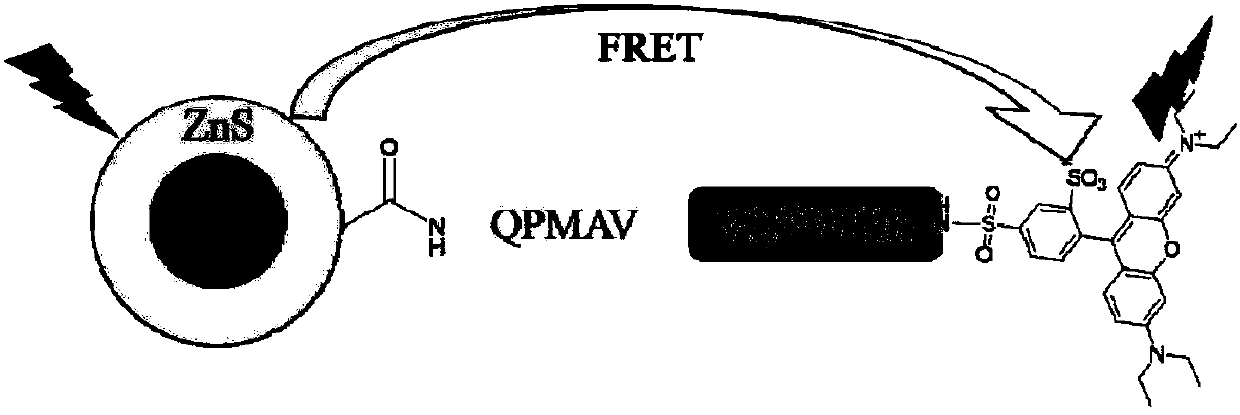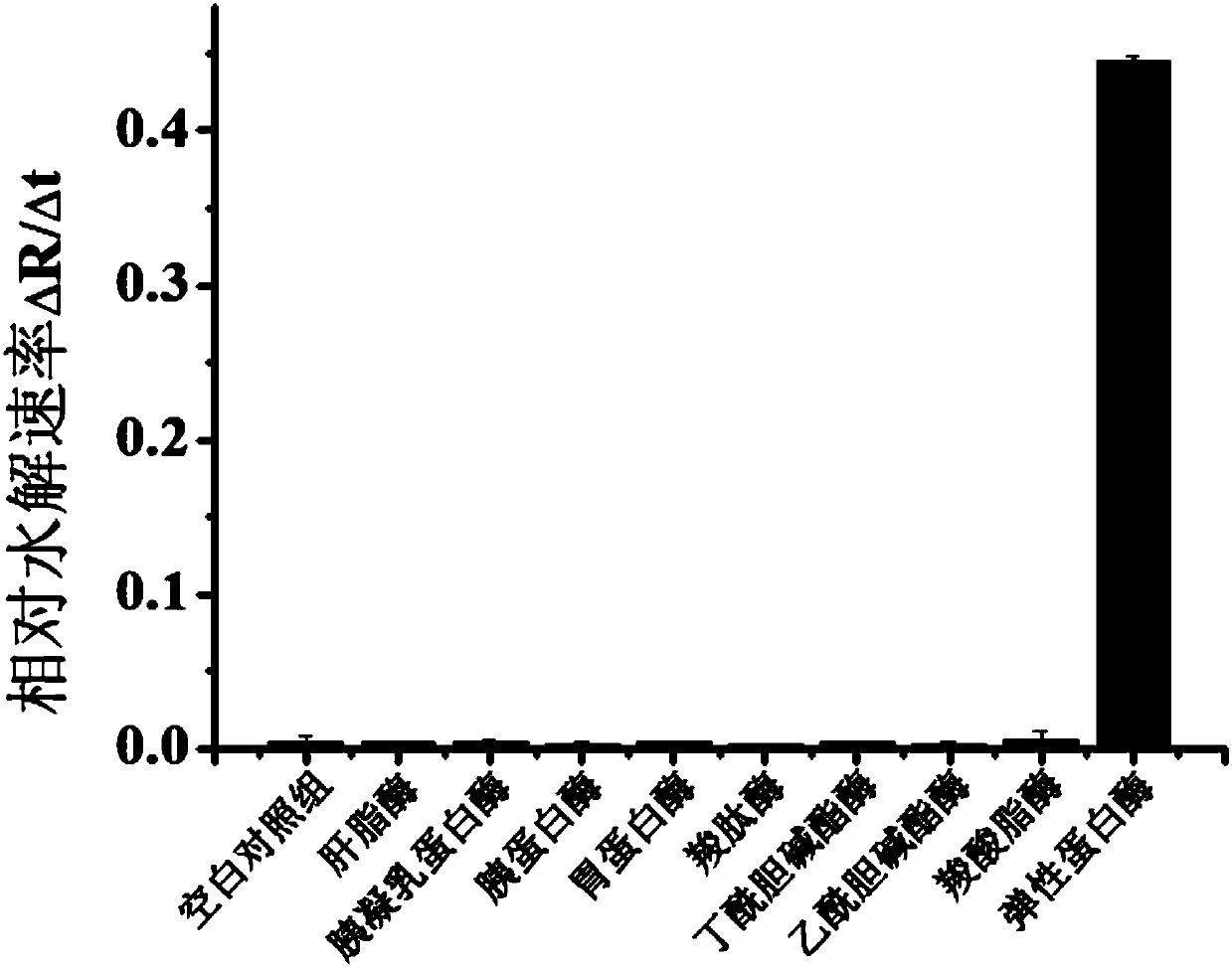Quantum dot fluorescence probe, preparation method and application thereof, and method and kit for detecting activity of elastinase
A technology of elastase and fluorescent probe, applied in the direction of fluorescence/phosphorescence, chemical instruments and methods, measuring devices, etc., can solve the problems of low elastase activity, decreased immunity, respiratory failure, etc., and achieve high effectiveness, High affinity, high sensitivity effect
- Summary
- Abstract
- Description
- Claims
- Application Information
AI Technical Summary
Problems solved by technology
Method used
Image
Examples
Embodiment approach
[0032] According to a specific embodiment of the present invention, the elastase is neutrophil elastase (a serine proteolytic enzyme secreted by neutrophils), and the amino acid sequence of the elastase-specific polypeptide is preferably as SEQ ID No: 1 (QPMAVVQSVPQK), the rhodamine derivative is preferably sulforhodamine B. Such as figure 1 As shown, the semiconductor quantum dot forms an amide bond connection with the amino group of glutamine (Q) at the 5' end of SEQ ID No: 1 through its own carboxyl group, and the 4th sulfonic acid group of sulforhodamine B is connected with SEQ ID No: 1. The amino group of lysine (K) at the 3' end of ID No: 1 forms a sulfonamide linkage. In this preferred case, the quantum dot fluorescent probe has extremely high specificity and sensitivity to elastase.
[0033] in, figure 2 shows that elastase catalyzes figure 1 The schematic diagram of the hydrolysis of the quantum dot fluorescent probe shown, under the catalysis of elastase, the po...
preparation example 1
[0090] This preparation example is used to illustrate the preparation of the quantum dot fluorescent probe of the present invention
[0091] (1) In the MES buffer solution with a pH value of 6.0, EDC and NHS were respectively contacted with the three kinds of semiconductor quantum dots customized as above for 30 minutes at room temperature to activate the carboxyl groups on the surface of the semiconductor quantum dots; wherein, The molar ratio of quantum dots to EDC is 1:4000, and the molar ratio of EDC to NHS is 2:5.
[0092] (2) Ultrafiltration is performed on the contacted product through an ultrafiltration membrane with a molecular weight cut-off of 10 kD to remove unreacted EDC and NHS, and then PBS buffer exchange is performed to make the pH of the system = 7.2.
[0093] (3) Respectively react the activated carboxyl group on the surface of the semiconductor quantum dot obtained in step (2) with the amino group of SEQ ID No: 1 connected with sulforhodamine B at 30° C. fo...
Embodiment 1
[0096] This example is used to illustrate the method for detecting elastase activity with the quantum dot fluorescent probe provided by the present invention.
[0097] Dissolve 100 μg of elastase sample in 100 mM Tris-HCl (containing 500 mM NaCl, pH=7.5) buffer solution and carry out gradient dilution, prepare different concentrations of elastase standard solution according to the concentration given in Table 1, and prepare the obtained The elastase standard solution was preheated in a 30°C constant temperature water tank; at the same time, the black flat-bottomed 96-well plate was preheated in a 30°C incubator. Subsequently, 40 μL of the preheated elastase standard solution was placed in a preheated black flat-bottomed 96-well plate, and then 120 μL of 100 mM Tris-HCl (containing 500 mM NaCl, pH=7.5) buffer solution was added, and a negative control group ( Only add 160 μl of buffer solution), under dark conditions, 40 μL of quantum dot fluorescent probe 1 was contacted with ...
PUM
| Property | Measurement | Unit |
|---|---|---|
| Wavelength | aaaaa | aaaaa |
| Specific vitality | aaaaa | aaaaa |
| Specific vitality | aaaaa | aaaaa |
Abstract
Description
Claims
Application Information
 Login to View More
Login to View More - R&D
- Intellectual Property
- Life Sciences
- Materials
- Tech Scout
- Unparalleled Data Quality
- Higher Quality Content
- 60% Fewer Hallucinations
Browse by: Latest US Patents, China's latest patents, Technical Efficacy Thesaurus, Application Domain, Technology Topic, Popular Technical Reports.
© 2025 PatSnap. All rights reserved.Legal|Privacy policy|Modern Slavery Act Transparency Statement|Sitemap|About US| Contact US: help@patsnap.com



